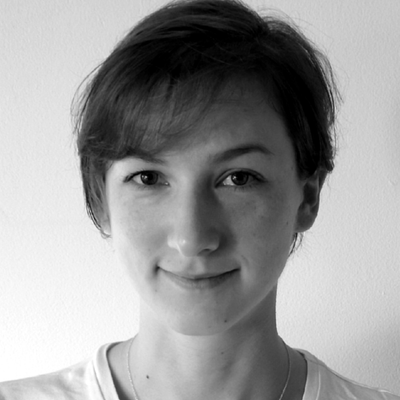ABOVE: Trofim Lysenko (left) and his audience at the Lenin All-Union Academy of Agricultural Sciences meeting in Moscow in 1948.
COURTESY OF THE RUSSIAN STATE ARCHIVE OF FILM AND PHOTO DOCUMENTS
On July 31, 1948, a middle-aged man took his position behind a lectern at the Lenin All-Union Academy of Agricultural Sciences meeting in Moscow and began a speech to hundreds of biologists, economists, and other specialists assembled for what promised to be a historic event. The address, entitled “The Situation in Biological Science,” was a tirade against the field of genetics, which the speaker declared to be pseudobiology, anti-Soviet, and counter to agricultural progress. The remarks carried authority, he advised listeners later in the meeting: “The Central Committee of the Communist Party has examined my report and approved it.”
Members of the audience, some of whom were prominent geneticists, were only too familiar with the speaker, Trofim Lysenko,...
Lysenko was opposed to the idea of a “substance of heredity,” or genes, explains Loren Graham, a historian of science and professor emeritus at MIT. Instead, Lysenko believed, as had been suggested by some scientists in previous centuries, that plants and other organisms acquired their characteristics by responding to their environments, and that those acquired traits could be inherited by subsequent generations through some nongenetic mechanism. The practical implication, Lysenko argued, was that plants could be trained to develop desirable traits in just a couple of generations. His best-known technique, “vernalization,” involved treating seeds from winter-growing, frost-sensitive plants with moisture and cold to trigger development in the spring—something he believed would become a permanent trait and boost yields.

Lysenko claimed he had evidence to support his theories, but his methods were far from rigorous. He ignored previous research, some of which examined vernalization-like techniques and found no improvement to crop yields. He disliked statistics and dismissed the need for proper controls. He’d run experiments with just two plants and then, when one perished, exclude it from his results rather than consider it a relevant outcome of his treatments. Later in his career—perhaps realizing his approach was flawed, Graham says—Lysenko likely fabricated results, directly or through other people.
While Lysenko’s work failed to convince geneticists in the Soviet Union and abroad, it was seized upon by Stalin’s regime, which in the late ’20s and early ’30s was facing nationwide food shortages, partly caused by disastrous agricultural policies, including enforced collectivization and persecution of peasant communities that resisted it. Lysenko’s promise of a quick fix to “make animals and crops much more productive . . . was extremely attractive,” Graham explains. “They adopted him and elevated him in a very uncritical way.” Lysenko’s techniques were implemented on a massive scale, and the inevitable failures—yields didn’t improve, and vernalization seemed to decrease seed germination—were blamed on his critics.
As his popularity grew, he eliminated rivals. Respected geneticist Nikolai Vavilov, who had mentored Lysenko and ran the Academy of Agricultural Sciences before Lysenko took over, was arrested in 1940 after Lysenko and allies complained of his “anti-Soviet” views. Vavilov loyalists were dismissed, imprisoned, or executed; Vavilov starved to death in prison in 1943. Lysenko’s infamous 1948 address accelerated his takeover: scores of Russian geneticists were subsequently fired—some committed suicide or fled abroad—and criticism of so-called Lysenkoism became impossible.
See “Genomics Reveals How Humans Can Inadvertently Drive Plant Mimicry”
It wasn’t until the 1950s, after years of ineffective policies, that Lysenko’s influence began to wane. Stalin died in 1953, the same year that James Watson and Francis Crick published the structure of DNA. Lysenko was removed as head of the Academy in 1954, although for a time he remained a government advisor. Later that decade, several of his ideas—particularly his insistence that plants of the same species didn’t compete with one another and could thus be planted extremely close together—were adopted by the People’s Republic of China under Mao Zedong and are widely acknowledged to have contributed to the Great Chinese Famine of 1959–1961, which killed at least 15 million and perhaps as many as 30 to 40 million people. Still, Lysenko’s views didn’t budge. Shortly before his death in 1976, he reportedly stated: “I declare that we have never used and are not going to use any ideas and methods of molecular biology.”
Lysenkoism has since become almost synonymous with political oppression of science. But recently, some of Lysenko’s proclamations have been exhumed in the context of epigenetics and nongenetic mechanisms of inheritance. Some Russian academics claim his 1948 speech was misunderstood, and that he was really a pioneer of developmental biology—arguments that scientists and historians view as grave misrepresentations. Lysenko rejected scientific methodology and the entire foundation on which epigenetics is based, Graham says. His primary legacy is one of scientific obstruction and persecution of scientists; any contribution to biological theory, Graham writes in his 2016 book, Lysenko's Ghost: Epigenetics and Russia, can be simply summarized: “Where he was right, he was not original; where he was original, he was not right.”
Interested in reading more?







